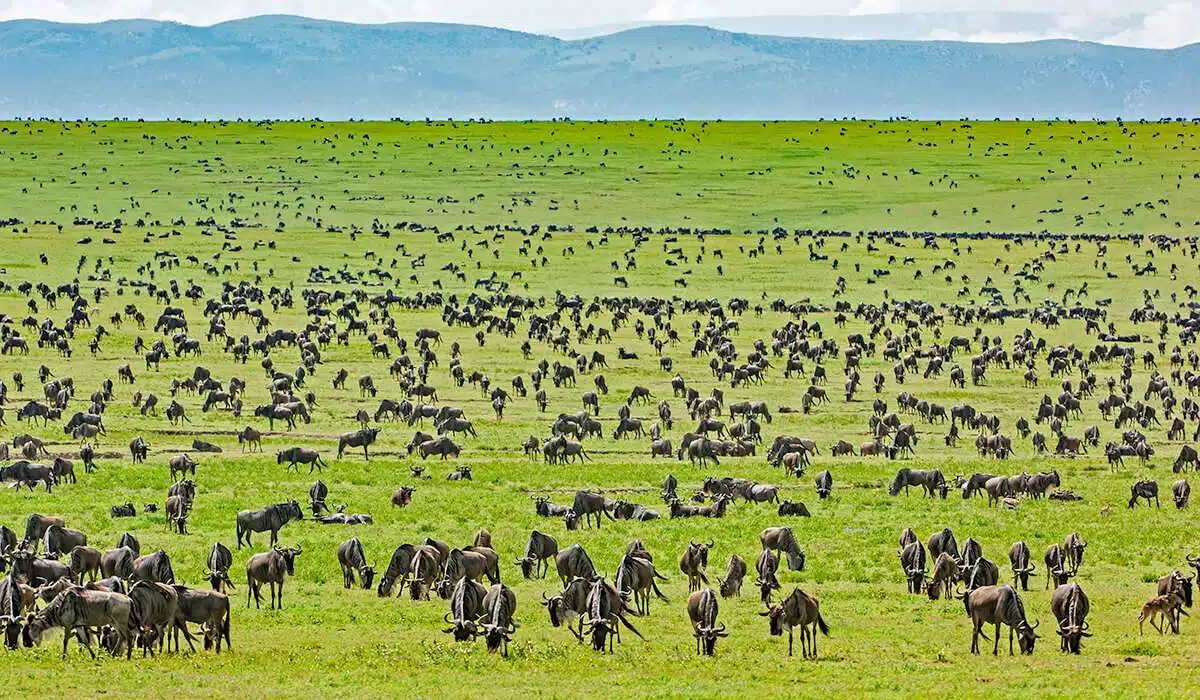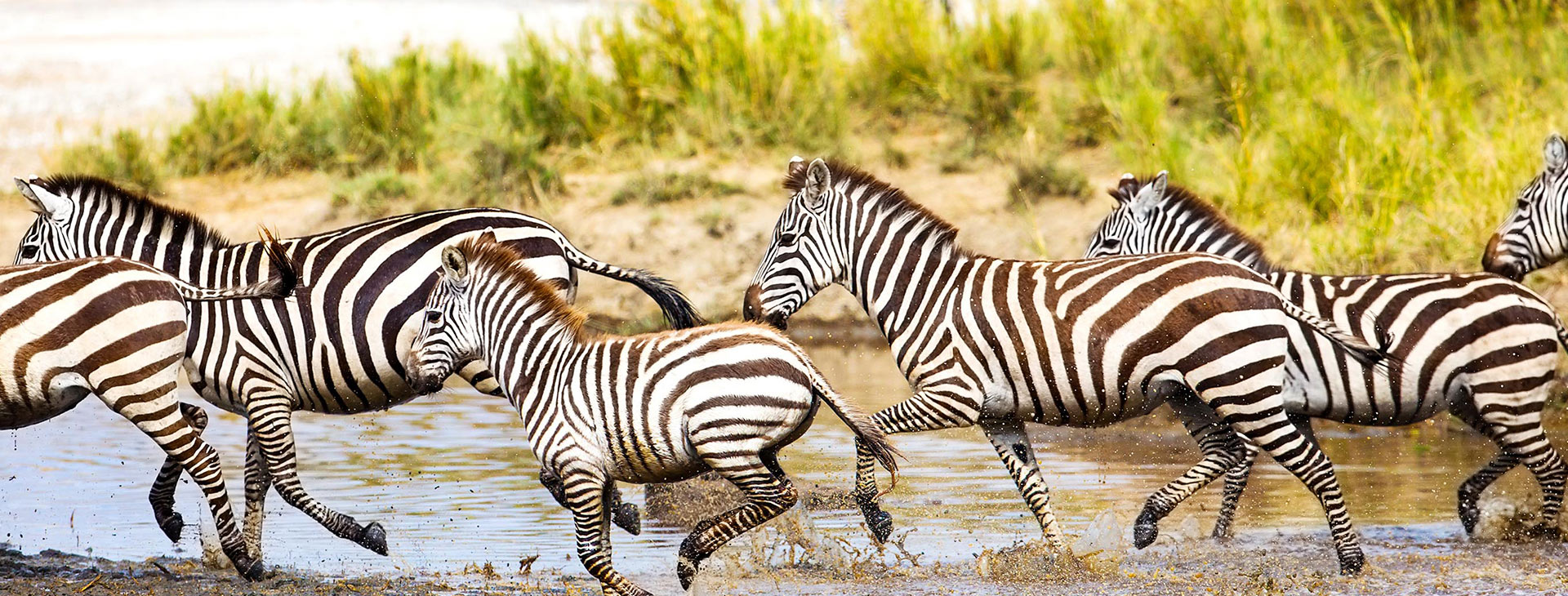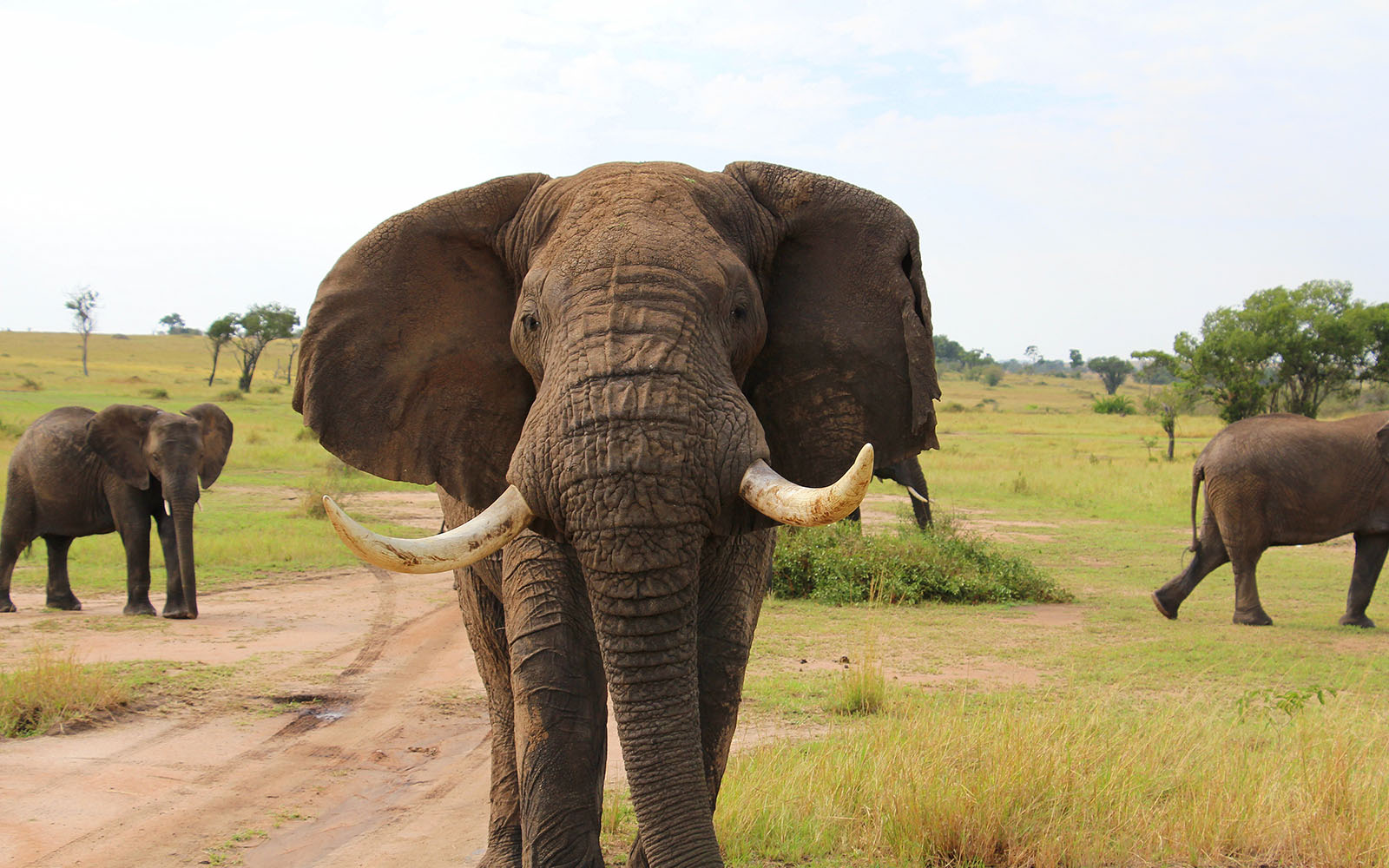9-Day Serengeti Migration August to October

9-Day Serengeti Migration August to October- Description
This dream itinerary, created specifically to follow the Great Migration, transports us to the epicenter of this magnificent Earthly event. With four nights on the Serengeti, we get the opportunity to see the enormous Serengeti plains as well as spend several days observing the great migration, which occurs from August to October in the Serengeti’s northern tip region.
Day by Day Itinerary
Day 1
Arrival in Arusha
A Mowana Safari Adventure representative will meet you up from the airport and transport you to your Arusha lodging, where you will stay overnight, rest, and prepare for the activities ahead. Ilboru Safari Lodge is a haven of tranquility and beauty.
Day 2
Tarangire National Park
Your own safari guide will pick you up from your Arusha lodgings in the morning. On a decent tarmac road, you’ll travel to Tarangire National Park over gently rolling Masai plains with scattered acacia trees. Many Masai in colorful clothing will be seen walking along the roadside, riding bicycles, herding cattle, and driving donkey carts. Tarangire National Park is famous for its massive elephant herds, but it also has a diverse range of other wildlife. Seasonal marshes, savanna, and the life-giving Tarangire River may all be seen from the open top of your safari car. To mention a few, you’ll see zebra, wildebeest, buffalo, elephant, and giraffe. It’s possible that you’ll encounter lions chasing prey or leopards lounging in the trees above, watching.
You will drive to your accommodation for dinner and overnight after your extensive game drive.
Day 3
Serengeti National Park
After breakfast, you will go to the rich highlands of Iraq, where the Iraqw people cultivate wheat and corn. We’ll journey through the mist-shrouded rainforests of the Ngorongoro Conservation Area, where you might encounter baboons, leopards, or even elephants hiding in the dense foliage. You’ll be able to witness the breathtaking Ngorongoro Crater as you pass through the Ngorongoro Conservation Area before continuing on to the Serengeti National Park, which you’ll arrive at around lunchtime. Serengeti National Park is Tanzania’s largest park, containing a broad range of landforms and habitats, including grassland plains, wetlands, lakes, savannah, and mountains. You will be driven to your hotel after a lengthy game drive, where you will enjoy dinner and an overnight stay.
Day 4
North Serengeti migration
We go on an en route game drive to the Serengeti’s northern section in the morning. The Northern Serengeti, which stretches for roughly 100 kilometers from Seronera, is a pleasant sloping landscape punctuated by minor rivers, hills, and kopjes. There is a diverse permanent population of species here, as well as some stunning geological features like the lovely Lobo Kopje. The Northern Serengeti is a fascinating and diverse land that receives fewer visitors because it is located far from the park’s major access point in the south.
During August, the migration passes through this area, and we may be lucky enough to see one of the most dramatic river crossings as the herd attempts to bridge the Mara River while avoiding the powerful currents and ravenous crocodiles.
After a long day, we return to our hotel for dinner and a restful night’s sleep under the spectacular African sky on the ‘Endless Plain.’
Day 5
Serengeti crossing
You’ll leave after an early breakfast to make the most of the day. There’s a chance you’ll catch a glimpse of the animals when they cross the Mara River. Hundreds of thousands of anxious wildebeest congregate along the river’s banks, gazing longingly across the choppy water to the verdant grass on the other side, yet no animal moves. It just takes one brave wildebeest to take the plunge, and the others will follow! The animals that successfully dodge the crocodile jaws and make it over the river are rewarded with the Masai Mara’s beautiful green grazing grass.
Day 6
North to Serengeti central
After breakfast, you’ll return to Seronera, where you’ll have more opportunity to see the Serengeti’s magnificent wildlife and natural splendor.
Apart from the migrating herds, we could get a chance to view the local predators, such as leopards, cheetahs, and lions, going about their business.
We return to our accommodation after an extended game drive for a delicious meal and another night of relaxation and conversation by the fire, surrounded by the sweeping majesty of the star-lit African night out on the ‘Endless Plain’.
Day 7
Central Serengeti to Ngorongoro Conservation Area
After breakfast, you will embark upon another incredible game drive in The Serengeti before travelling to the Ngorongoro Crater. Arriving at the edge of the crater in the afternoon, you will have your first glimpse of what awaits you the following day – glistening streams, open grassland and an infinite number of animals. You will spend the night at a nearby lodge on the rim of the crater.
Day 8
Ngorongoro Crater
After an early breakfast, we descend to the crater floor for a day of wildlife viewing in one of the most spectacular places on Earth, where animals roam freely across unfenced areas, allowing us to have an uninterrupted game viewing experience. The Caldera was built around three million years ago when a volcano the size of Kilimanjaro erupted in a cataclysmic eruption. It has a depth of 610 meters and a surface area of 260 square kilometers. It’s a closed environment. The sound of the bells worn around the necks of Maasai cows is represented by the term Ngorongoro. It is one of the best spots in Africa to see the big five, as well as wildebeest, gazelle, reedbuck, and a variety of other animals, as well as over 500 different bird species. You’ll have a picnic lunch at the hippo lake before ascending the steep road out of the crater in the afternoon. You will spend the night in Karatu, a nearby town.
Day 9
Lake Manyara National Park to Arusha
After breakfast, you will go to Lake Manyara National Park, our final stop on this epic safari. This park is 120 kilometers west of Arusha and is very small but diversified. It gets its name from a small salt lake that covers about 70% of the land area, floods and dries with the seasons, and is home to tens of thousands of flamingos as well as 500 other bird species. You’ll encounter monkeys, giraffes, zebras, wildebeest, buffalo, elephants, and, with luck, lions resting in the trees as you explore the park. The park is notable for its various landscapes, which include not just broad grassland plains but also primate-infested woods and cliffs dotted with baobab trees. We’ll return to Arusha after lunch and arrive in the late afternoon.
End of Tour
Book / Inquire
Safari Packages

8-Day Serengeti Guided Tour
This excursion will take you to the Ngorongoro Crater, which has one of Africa’s highest animal concentrations. Inside a self-contained environment packed with creatures, you

7-Day Tanzania Big Five Safari
A safari in Northern Tanzania, the most popular safari destination, will allow you to discover and explore national parks that are not to be missed.

9-Day Serengeti Migration August to October
This dream itinerary, created specifically to follow the Great Migration, transports us to the epicenter of this magnificent Earthly event. With four nights on the
Discover Tanzania best places to visit.
Tanzania Destinations
Discover Tanzania’s iconic destinations

Ngorongoro Crater
A trip to the Ngorongoro Crater is a once-in-a-lifetime opportunity. There are few sites in the planet with such high wildlife populations and diversity. It

Tarangire National Park
Tarangire is one of northern Tanzania’s major seasonal parks, with a lot of migratory activity within the Tarangire environment. Large herds of animals are drawn
Let's talk & discuss with us
Enquire now and a Travel expert will get back to you within 24 hours.
